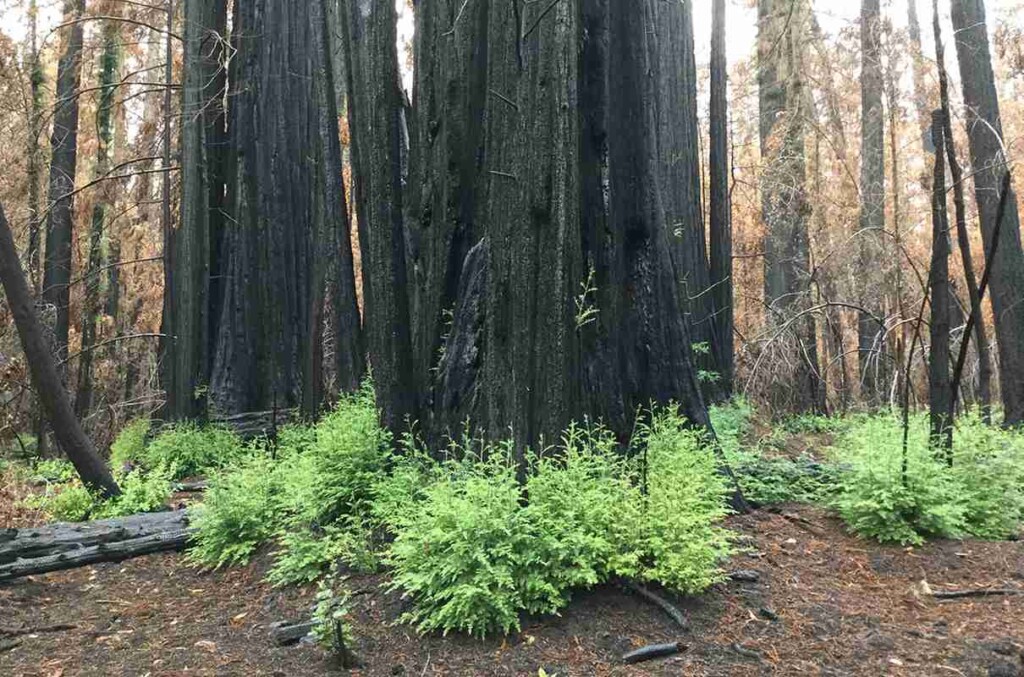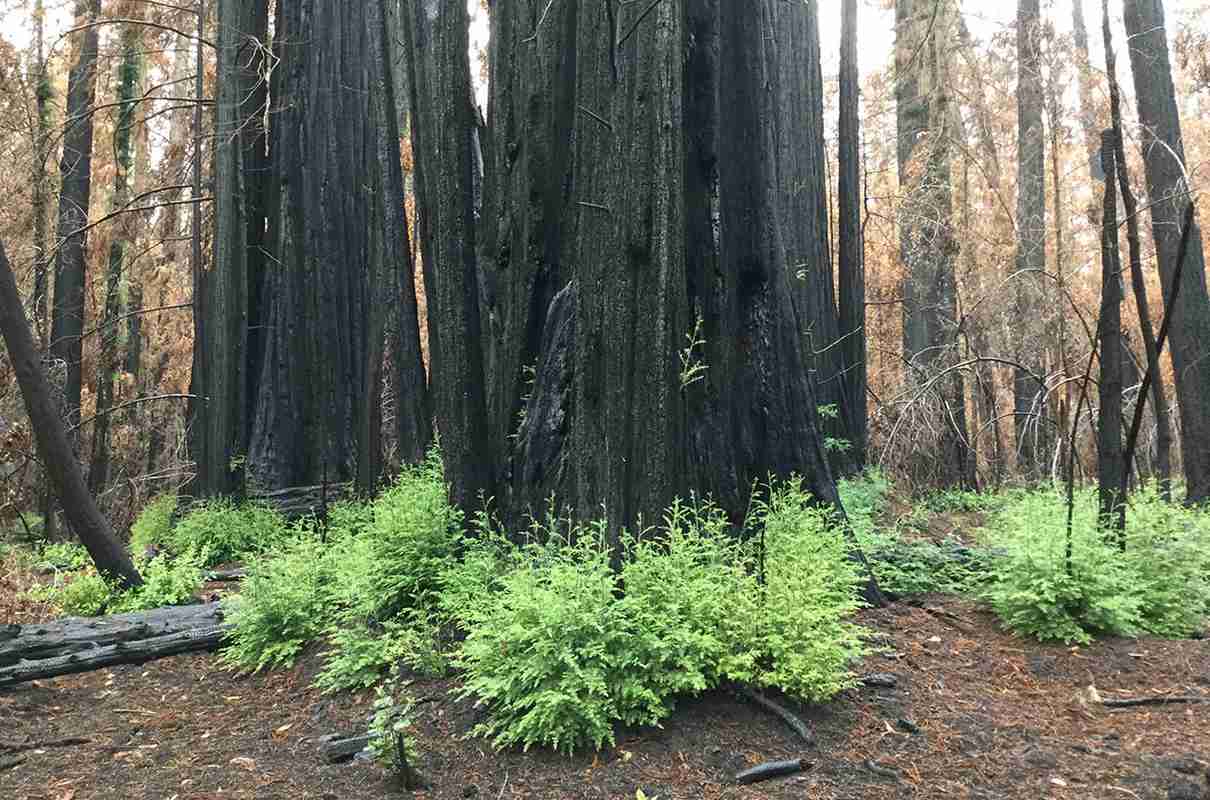
A devastating fire sparked fears that California’s redwoods would never recover, but these old timers had a trick up their trunks, and utilized deep stores of energy in their roots to sprout new growth weeks after they were charred.
The story begins after lightning sparked a fire in California’s Big Basin Redwoods State Park during the early years of the recent drought. Scientists were worried about the ancient trees, but also knew that they evolved to deal with fire over millions of years.
Nevermind their thick shaggy bark which acts like a fireman’s coat—the fire blazed right up to their crowns, torching every needle along the way, and frightening scientists into thinking they would never recover.
“It was shocking,” Drew Peltier, a tree ecophysiologist at Northern Arizona University, told Science Magazine. “It really seemed like most of the trees were going to die.”
Though thin, the pine needles of a redwood contain all the necessary equipment for photosynthesis, and when the fire burned them all, it was unclear how the tree would create energy for itself, but a new paper published by Peltier and his colleagues shows that new buds had been lying dormant for a long time under the bark of these trees, and sugars produced from photosynthesis decades ago were used to power these buds out into the sunlight.
MORE BIG TREE NEWS: Genetic Lineage of Thousand-Year-Old Oak Trees Seed an Experimental ‘Super Forest’
Along with offering a cheerful news headline that these ancient trees in Big Basin, some of which are over 2,000 years old, will recover in time, the study presented a fascinating finding that changes how we short-lived fleshlings perceive our slow woody neighbors.
Melissa Enright of the US Forest Service used black plastic bags to block the sunlight on some of the charred trees from reaching the shoots as they emerged. Nevertheless, the shoots carried on shooting, and soon they were little pine boughs. Then Enright and her colleagues like Peltier were able to radiocarbon date the sugars in the boughs to assess their age.
MORE NEWS LIKE THIS: Tree-Loving Brits Crowdsource a National ‘Ancient Tree Inventory’ – 200,000 Unique Trees
The average age of the sugar molecules was 21 years—meaning the tree was using energy it generated over two decades ago to power new growth. Then, by looking at the individual carbon molecules inside the sugars, they saw that some of the carbon was three times as old as that.
Peltier says it challenges the whole image of tree metabolism, and gives real hope that our planet’s older trees can survive fires and other hazards that may be occurring because of a changing climate.
SHARE This Delightful Surprise And Amazing Dendrology With Your Friends…




















